

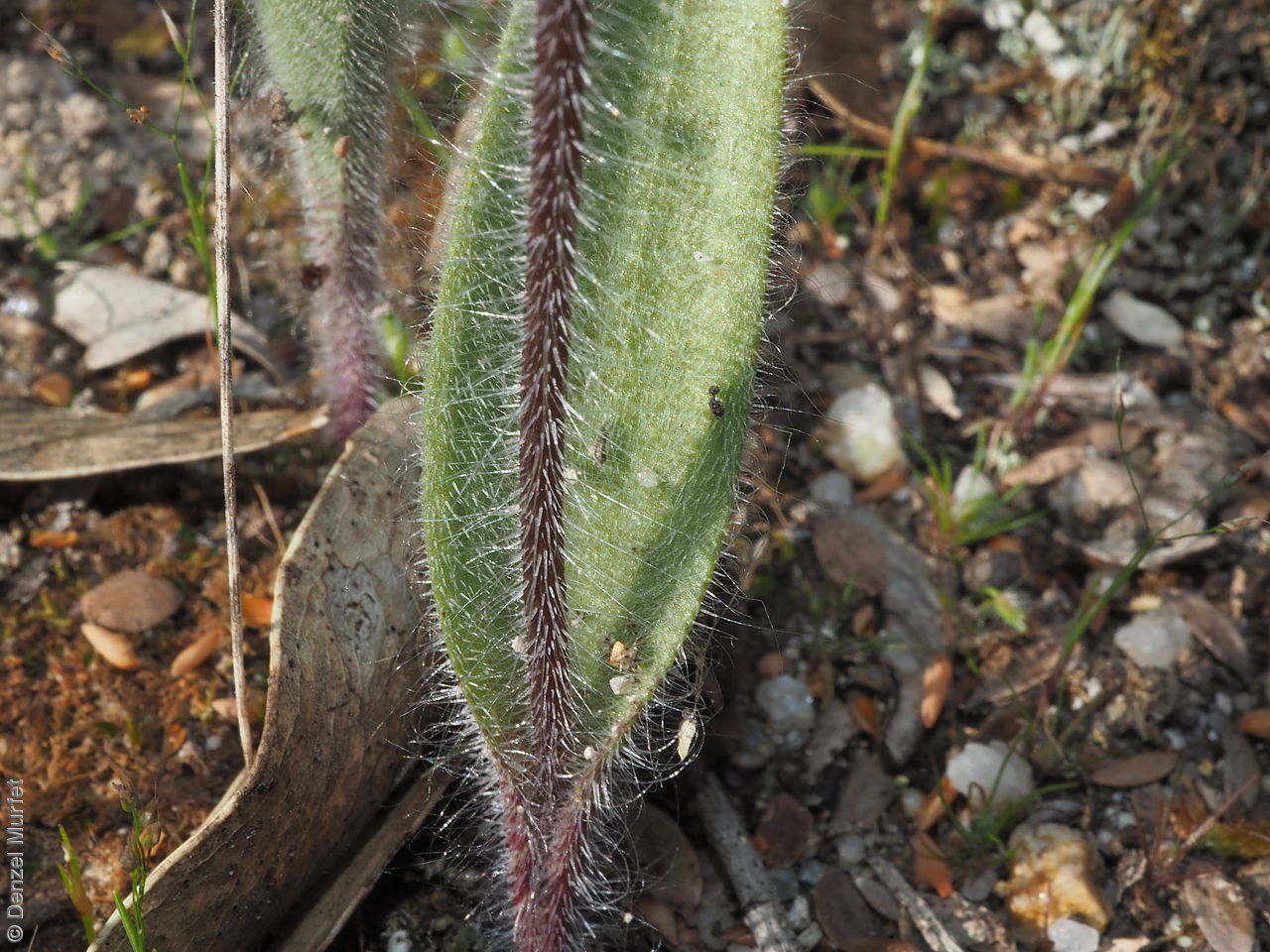

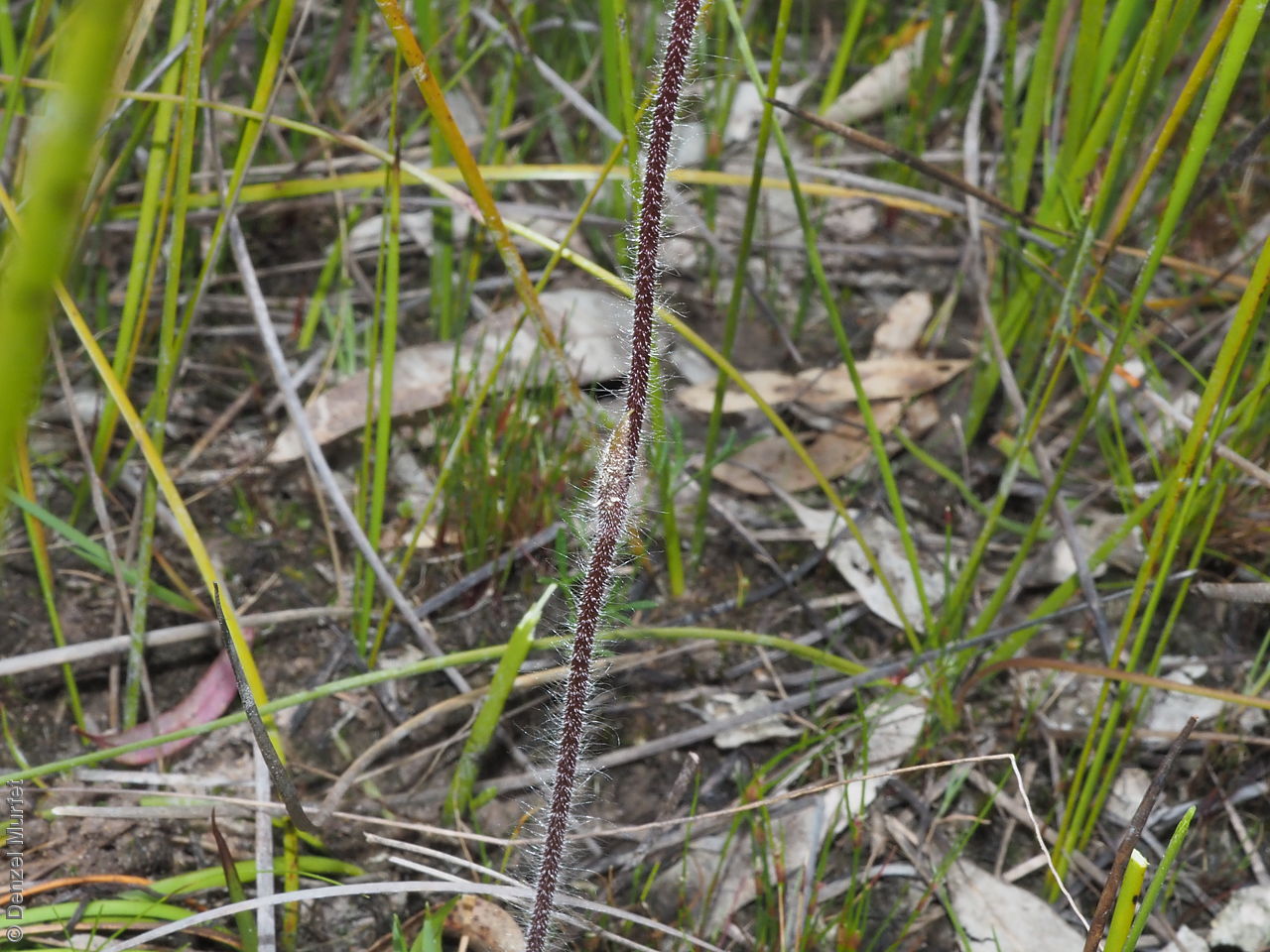
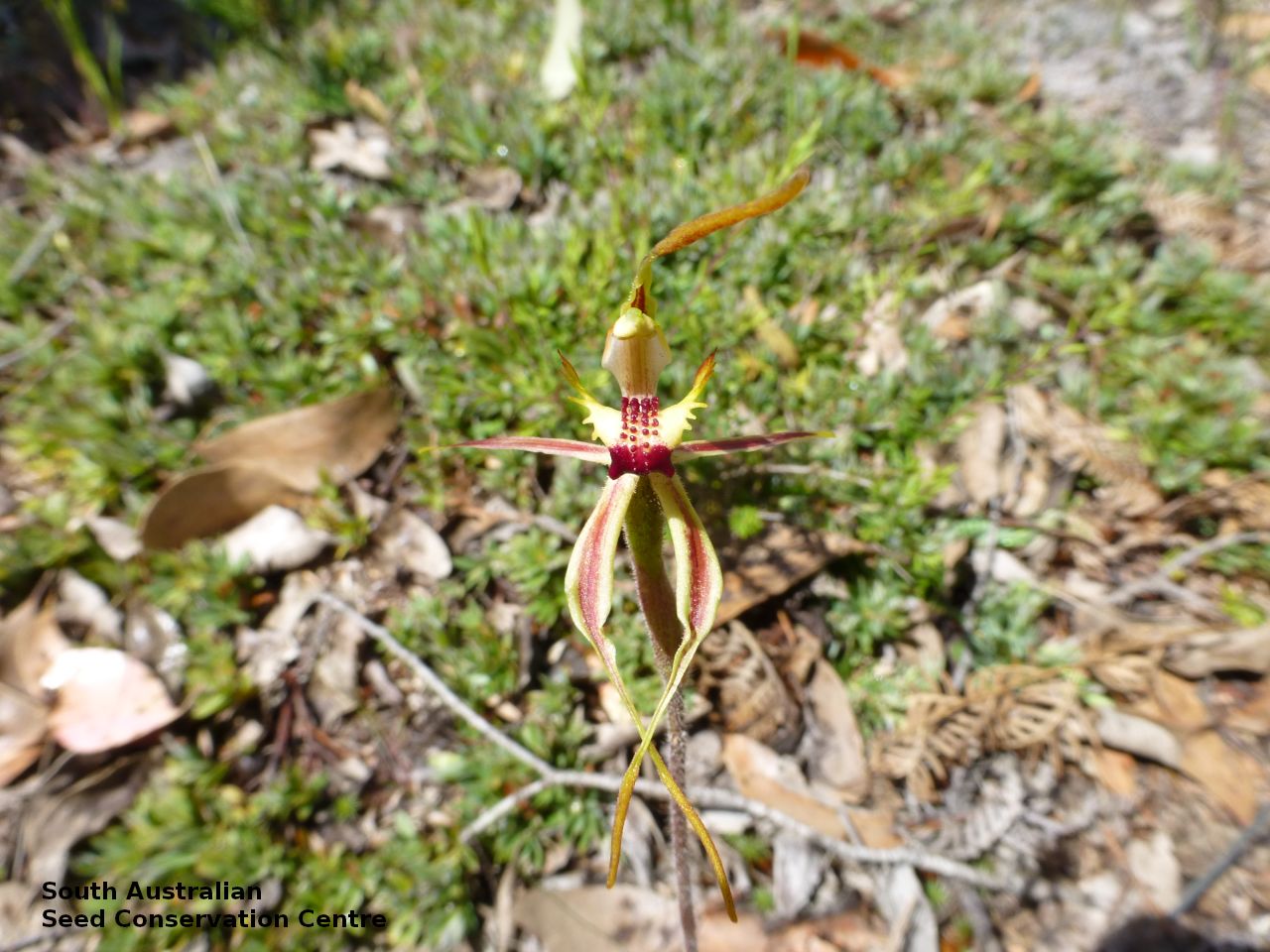



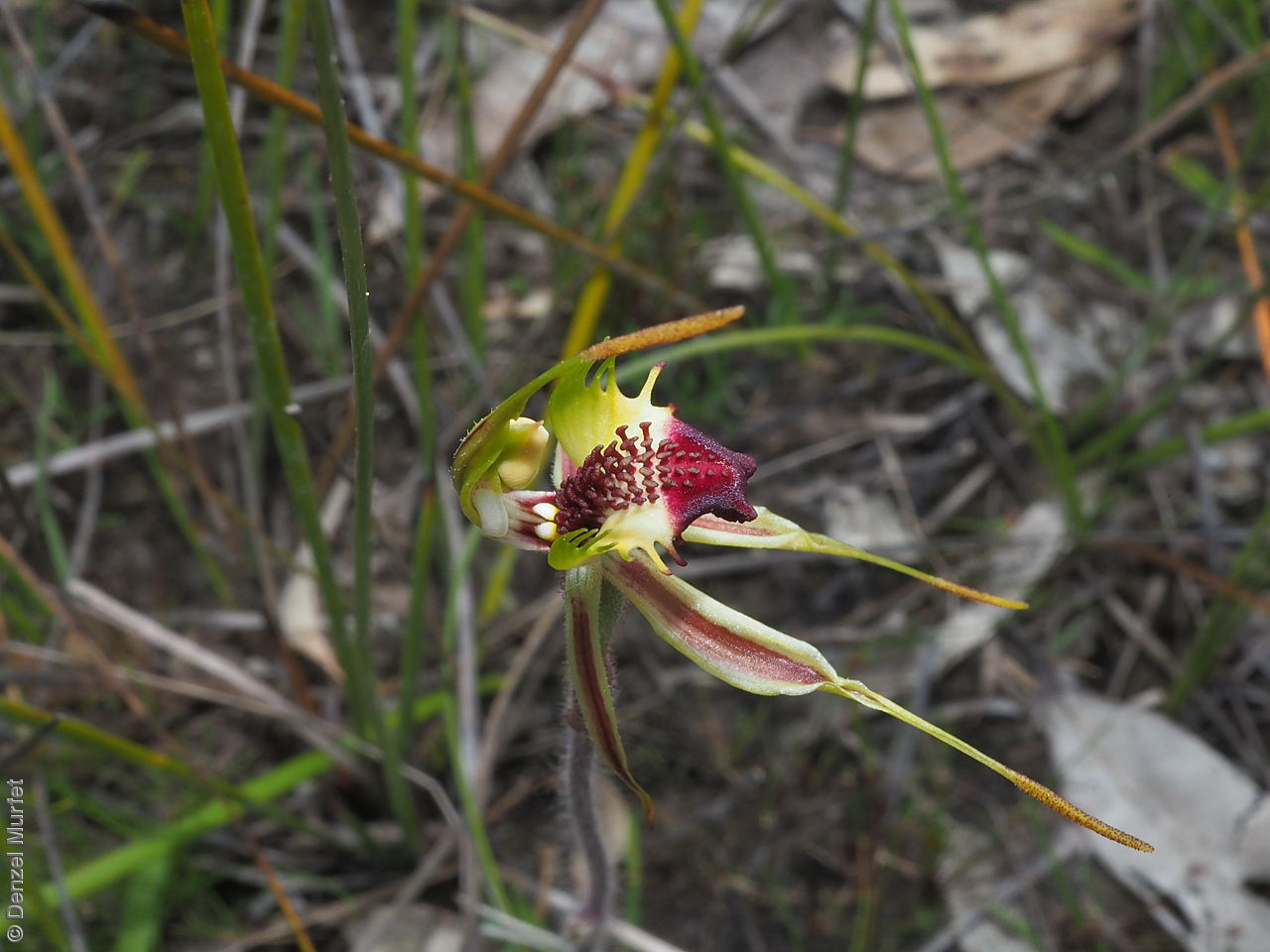


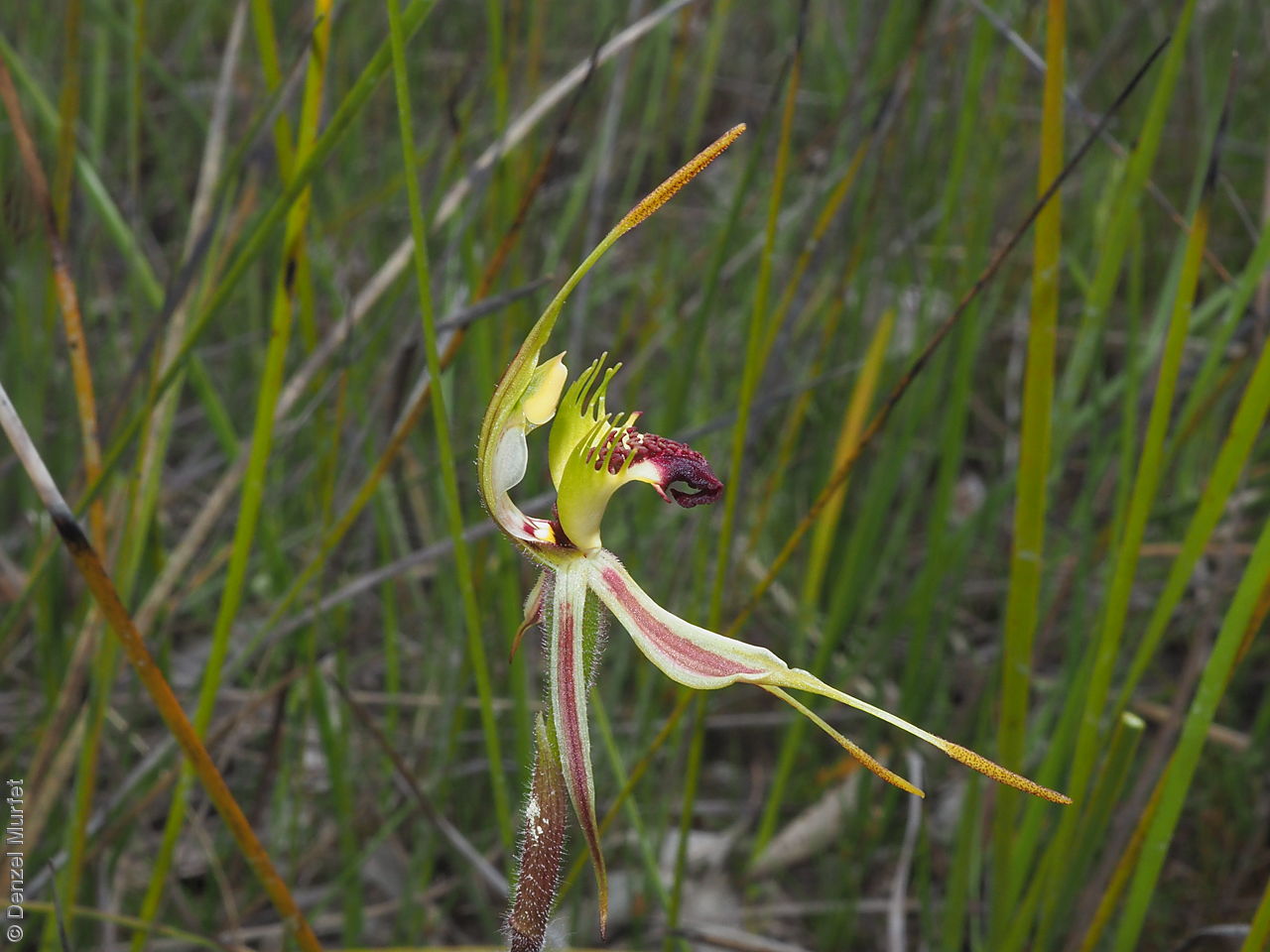


Botanical art
Etymology
Caladenia from the Greek 'callos' meaning beauty and 'aden' meaning a gland; referring to the colourful labellum and the glistening glands at the base of the column that adorn many of the species. Phaeloclavia from the greek 'phae' meaning dark and Latin 'clava' for club, referring to its brownish clubs.
Distribution and status
Found in the South East of South Australia. Also occurs in Victoria, Act and New South Wales Native.
Herbarium region: South Eastern
NRM region: South East
AVH map: SA distribution map (external link)
Plant description
Grows to 25cm tall, with a single flower (rarely two). It has a single hairy basal leaf to 13mm long, linear to lanceolate, with red-purple blotches. The flower is green with variable crimson striping, a white labellum with green lateral lobes, with a maroon apex and calli. It has distinct yellowish to brownish clubs on sepals 25-40mm long and shorter petals. It is difficult however to distingush between this species and Caladenia parva which share not only similar habitat but the same pollinator. Flowering September to January. Fruits are brown papery ellipsoid capsule. Seeds are very small brown ellipsoid seed with a long cylindrical translucent brown mesh-like covering.
Seed collection and propagation
Collect fat capsules as they start to dry and turn brown. Pods will split and release the seeds quickly and will require monitoring. To increase the chances of collecting mature pods, it is recommended that a small breathable bag (ie. Organza bags) be used to enclose the developing capsules. Place the capsules in a container that will hold fine seeds and leave to dry for a few weeks or until the capsule split. Then carefully hold the capsule and tap it gently to release the seeds. Store the seeds with a desiccant such as dried silica beads or dry rice, in an air tight container in a cool and dry place, a refrigerator or in liquid nitrogen.